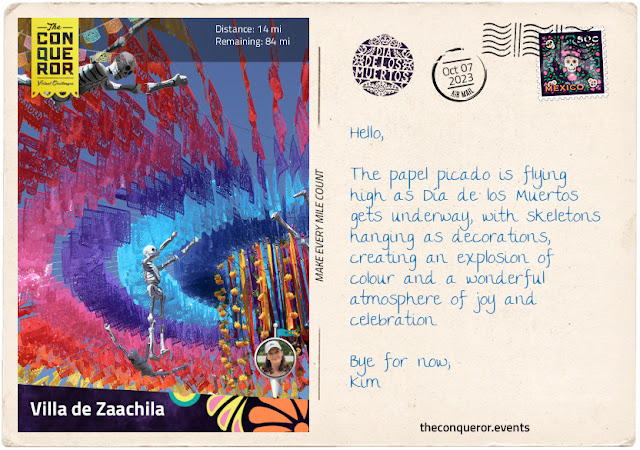Día de los Muertos
Festivities around the world are important cultural events. They are opportunities to celebrate and commemorate significant occasions, bringing people together to bond and honour their heritage through entertainment, sharing traditional food, art and craft exhibitions and so on.
One such meaningful event in Mexico is Día de los Muertos (Day of the Dead), which occurs each year on 1 and 2 November (dates may vary slightly in some regions), a holiday to remember and celebrate the lives of relatives and loved ones who have departed. It is believed that during this holiday period, a bridge between the living and the dead is created, allowing the spirits of the deceased to return for a brief visit with their families and friends.
While customs and traditions differ throughout the country, one of the most notable cities hosting Día de los Muertos is Oaxaca City, located in the southern part of Mexico in the state of Oaxaca. This stunning city is filled with colourful facades, wrought-iron balconies, cobblestone streets, quiet neighbourhoods, and well-preserved colonial-era architecture. The city centre is designated a UNESCO World Heritage site. The activity around the Zócalo (main square) is bustling, where musicians and artisans entertain passers-by while street vendors sell their wares.
As I wander through the streets, exploring the city, I delight at the artistic expressions unfolding on the walls of the buildings, where large and vibrant murals tell stories of Oaxaca’s culture. The city is renowned for its talented artists and artisans across various forms, from paintings and sculptures to ceramics and textiles.
Everywhere I look, it is brimming with colour and even more so now that preparations for Día de los Muertos are underway. Garlands of marigolds arch around doorways, calaveras (sugar skulls) appear on window sills, and papel picado (perforated paper) is strung together and hung across the streets. Each feature represents an important symbol during the celebrations that I will unpack as the journey progresses.
An important ritual for families prior to the festival is to visit the cemetery and prepare the gravesite of their loved one by first cleaning and tidying the site, building an ofrenda (altar), and then decorating it with marigolds, candles, and incense to help guide the spirits back to the living world. During the celebrations, families gather at the gravesite to pray, sing, share stories and memories, and bring food and drinks to picnic with their dearly departed.
Using Oaxaca City as the starting point, I look forward to travelling through villages and towns to learn and explore their customs, traditions and crafts. I am excited to walk through the markets and try their culinary delights, as Oaxaca is well known for its flavourful dishes.
Heading south, my journey will take a looped anti-clockwise approach, finishing back in Oaxaca City. Let’s go.





Comments
Post a Comment